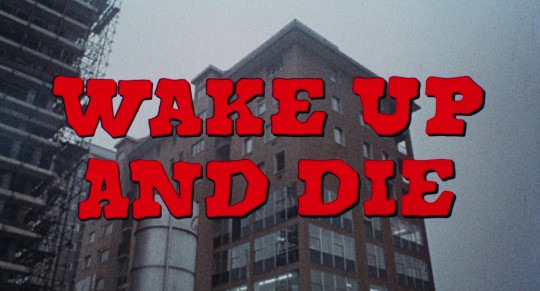#Lizzani
Explore tagged Tumblr posts
Text
Il Boom
... è aumentata la produzione lorda e netta, il reddito nazionale cumulativo e pro capite, l'occupazione assoluta e relativa, il numero delle auto in circolazione" gli anni del boom e del miracolo italiano e degli elettrodomestici in funzione, la tariffa delle ragazze squillo, la paga oraria, il biglietto del tram e il totale dei circolanti su detto mezzo, il consumo del pollame, il tasso di sconto, l'età media, la statura media, la valetudinarietà media, la produttività media e la media oraria al giro d'Italia. Tutto quello che c'è di medio è aumentato, dicono contenti. E quelli che lo negano propongono però anche loro di fare aumentare, e non a chiacchiere, le medie; il prelievo fiscale medio, la scuola media e i ceti medi. Faranno insorgere bisogni mai sentiti prima. Chi non ha l'automobile l'avrà, e poi ne daremo due per famiglia, e poi una a testa, daremo anche un televisore a ciascuno, due televisori, due frigoriferi, due lavatrici automatiche, tre apparecchi radio, il rasoio elettrico, la bilancina da bagno, l'asciugacapelli, il bidet e l'acqua calda. A tutti. Purché tutti lavorino, purché siano pronti a scarpinare, a fare polvere, a pestarsi i piedi, a tafanarsi l'un con l'altro dalla mattina alla sera. Io mi oppongo!
Luciano Bianciardi, La vita agra (1964)
45 notes
·
View notes
Text
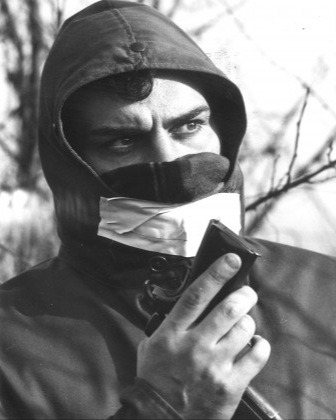
Gian Maria Volonté on the set of Bandits in Milan (1968)
98 notes
·
View notes
Text
La Vita Agra (1964) Carlo Lizzani
53 notes
·
View notes
Text




La vita agra, 1964, di Carlo Lizzani con Ugo Tognazzi, Giovanna Ralli e Enzo Jannacci
5 notes
·
View notes
Text
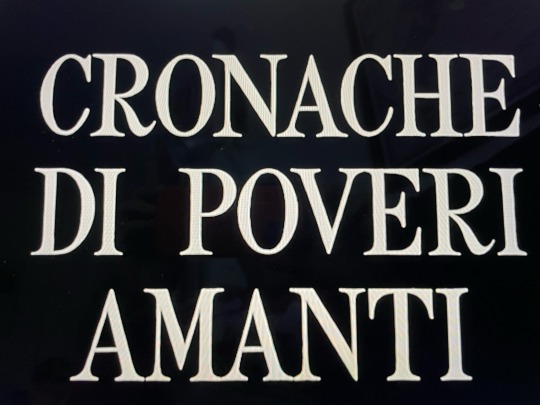

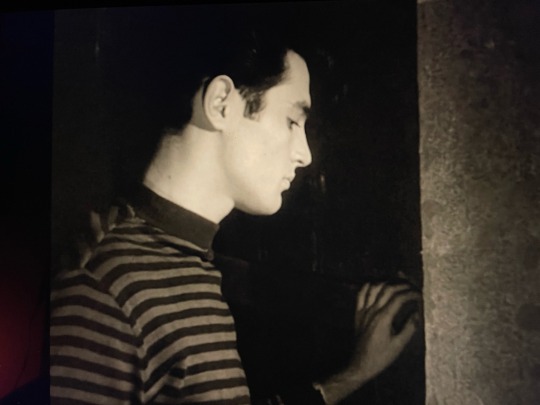

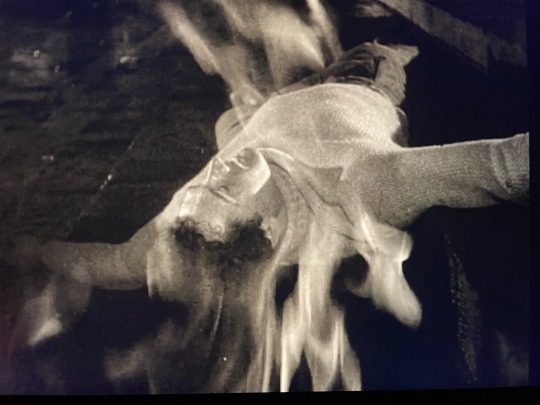

Cronache di poveri amanti - Carlo Lizzani (1954)
14 notes
·
View notes
Text
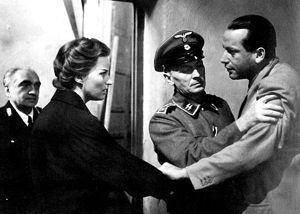
Silvana Mangano-Frank Wolff "El proceso de Verona" (Il processo di Verona) 1963, de Carlo Lizzani.
6 notes
·
View notes
Text
Favorite New-to-me Films—April ‘24

(listed in order pictured above, L to R)
READ on BELOW the JUMP!
They Came to a City (1944)
[letterboxd | imdb | tubi (US)]
In a thought experiment about post-war Britain brought to life, nine strangers from different backgrounds are spirited away to get a glimpse at a socialist utopian civilization. Their reactions are, as expected, varied.
A film adaptation of the J.B. Priestley play of the same name, They Came to a City isn’t thoroughly translated into something cinematic. The sets are visually interesting, but the film never escapes stagey-ness. Regardless, it’s an interesting film worth watching for its candor on social/political attitudes in Britain in the 1940s and the great character writing and acting. (BTW, I don’t think I’ve ever seen Googie Withers give a performance that’s any less than stellar.)
——— ——— ———
Love in the City / L’amore in città (1954)
[letterboxd | imdb | kanopy (US)]
This Italian documentary anthology dives into love, in many forms, in the city of Rome. Six directors each give an angle on life in the city. Carlo Lizzani provides a portrait of the lives of sex workers. Michelangelo Antonioni profiles women who attempted suicide over love gone wrong. Dino Risi captures a fleeting glimpse of dance hall life. Federico Fellini goes farcical, recounting a story of a “werewolf” applying to a marriage agency. Francesco Maselli and Cesare Zavattini share a sympathetic narrative of a mother who abandoned her baby. Alberto Lattuada provides a satirical look at men ogling (and harassing) women on the street.
As with all anthologies, the quality varies. Fellini’s segment was unsurprisingly my favorite (the same happened with Spirits of the Dead (1968)). I also deeply appreciated Antonioni’s tackling of such a sensitive topic and Maselli and Zavattini’s attempt to give a more humane spin on Caterina Rigoglioso’s story.
(If you live in the US, the film might be free to watch on kanopy with your library card!)
——— ——— ———
Two Monks / Dos monjes (1934)
[letterboxd | imdb]
When a new monk arrives at a monastery, he is unexpectedly attacked by another monk with a large crucifix. The other monks try to get to the bottom of this insane and seemingly random act of violence and uncover a tragic story of romantic rivals.
Stylistically, Dos monjes doesn’t completely live up to the outstanding gothic-expressionist monastery scenes—the bulk of the film recounting the monks’ past is shot and constructed less adventurously. However, I do think that the execution of a single story told from two different perspectives was strong.
——— ——— ———
Scenes of the Occupation from Gaza (1973)
[letterboxd | imdb | youtube]
Edited together from footage shot by a French news crew, Scenes is a short documentary on the conditions in Gaza following the devastating events of 1967. While an important film historically, it is short and very specific in its subject, so I can only properly recommend it in its historical and political context. That is to say, this film might be lost on you if you aren’t already well-versed or currently educating yourself in the history of Gaza and Palestine. More information about the film can be found on the Tokyo Reels website (info in English is on pages 19-20, the rest is in Japanese and Arabic).
——— ——— ———
Poplar Tree / Тополя (1996)
[letterboxd]
Gorgeously stop-motion animated under the direction of Valentyna Kostylieva, Poplar Tree interprets the Taras Schevchenko poem of the same name. It’s a short story about a woman coping with lost love when those around her wish her to move on.
There is a lovely digitized copy on the Ukrainian animation channel, with no subtitles. However, an English translation of the poem is available here. If you read the poem first, you’ll be good to go!
——— ——— ———
Night of the Seagulls / La noche de las gaviotas (1975)
[letterboxd | imdb | tubi (US)]
A doctor is assigned to a small, seaside village, but when he and his wife arrive, the welcome they receive is ice cold. The doctor and his wife, with the help of their assistant and an abused disabled local, uncover a tradition of sacrificing young women to an undead, demon-worshiping cult of Templar knights.
Night of the Seagulls is technically part of a series, but the films don’t have an overarching narrative, so it doesn’t matter if you’ve seen any of the other films. I have a penchant for supernatural stories that have to do with the sea, so years ago, with no context, I watched Ghost Galleon (1974). My feelings on that film were mixed, but I saw others online recommend Seagulls as the best of the series. I did like this film more, but my feelings are still mixed. A lot of the scenes with the disabled villager are rough to watch and his character on the whole could have been handled much better. The special effects makeup for the skeleton knights was fantastic. I appreciated that the doctor does not dismiss his wife’s concerns off-hand, which is atypical in this kind of story. I also liked how imminent the threat was—the demon knights are already here, so what are the outsiders supposed to do?!
Unique use of crabs.
As an aside, I was struck by how many similarities Seagulls had with the Thriller episode “A Place to Die” especially as they came out within a few months of each other!
——— ——— ———
Hercules in the Haunted World / Ercole al centro della terra (1961)
[letterboxd | imdb | kanopy (US)]
Hercules’ betrothed, Dianara, has been overtaken by dark forces. Her only hope is for Hercules, his best buddy Theseus, and their new friend Telemachus to travel to the underworld and capture the stone of forgetfulness. However, it’s Dianara’s own guardian, Lico, who is behind the plot.
Maybe my favorite new-to-me film I watched this month, Bava’s Hercules is a colorful nightmare and Christopher Lee is pitch perfect as the villain.
——— ——— ———
The Sisters / Le Sorelle (1969)
[letterboxd | imdb]
Diana, on the verge of a nervous breakdown, decides to visit her sister, Martha, at her home in the country. They haven’t seen each other in years, and we learn quickly that their relationship is extremely sordid and neither has dealt with the psychological or emotional consequences of that. It does not end well for either of them.
This was a genuinely strange movie. All things considered, I do think The Sisters would have perhaps worked a bit better/been more meaningful if they were not biological sisters but rather just grew up together (which at points I thought might actually be the case). Great execution of the awkwardness and tension around the men in the film, Martha’s husband and Diana’s suitor, and their slow realization of how profoundly messed up Diana and Martha’s past was. The film touches on so many heavy topics, I don’t freely recommend this. I didn’t even enjoy it, but it was such a unique film, I’m glad I checked it out. It’s definitely going to stick with me!
That said, The Others / Le Altre (1969), which Alessandro Fallay also worked on, I do recommend freely. That one is a sweet dramedy about a lesbian couple in Rome trying to have/raise a baby—essentially the polar opposite queer film to The Sisters.
——— ——— ———
Slayers: The Book of Spells / スレイヤーズすぺしゃる (1996)
[letterboxd | imdb]
Also: Slayers Excellent (1998) & Slayers: The Motion Picture (1995)
The Book of Spells is an anthology/OVA set of three adventures of Lina Inverse and Naga the Serpent, her companion and/or rival, depending on the day. In “The Scary Chimera Plan,” Lina tries to avoid getting chimerized by a crazed wizard, but gets ten extra Nagas for the trouble. In “Jeffry’s Knighthood,” Lina and Naga accept a job as bodyguards for an anemic prince with notions of becoming a knight. In “Mirror, Mirror,” Lina and Naga uncover a rogue magician’s plot to find a long-hidden magic mirror that creates mirror-image dopples of whoever gazes into it.
We watched a whole mess of Lina and Naga movies/OVAs this month. I’ve only seen some of the Slayers TV show and so only really knew about Naga via osmosis. Now, the sound of eleven Nagas laughing in unison will live forever in my nightmares.
——— ——— ———
As always, if any of these films catch your eye, but you need specific trigger/content warnings, don’t hesitate to ask for them!
——— ——— ———
This past month the blog quickly took on a Natacha Rambova theme.
The research I did for my closet cosplay of Rambova, raised so many questions for me about the production and release of her independently produced film, What Price Beauty? (1925), that it became the subject of my next installment of Lost, but not Forgotten.
Cosplay the Classics: Natacha Rambova

Lost, but not Forgotten: What Price Beauty? (1925)

This unplanned theming also informed what gif and still sets I made:
Salomé (1922)

[This one I actually gif-ed for reference for my upcoming cosplay of Nazimova, which my generous supporters on ko-fi and amazon have made possible! Nazimova cosplay is coming up as the next installment of Cosplay the Classics!]
Camille (1921)

Why Change Your Wife? (1920)

Forbidden Fruit (1921)

Twilight Q: Time Knot: Reflection (1987)

[This one had nothing to do with Rambova BTW]
——— ——— ———
As for this month, I hope to highlight some silent stunt spectaculars as I finish putting together the pieces for my Salomé cosplay.
Happy viewing!
☕Appreciate my work? Buy me a coffee! ☕
#roundup#1930s#1940s#1950s#1960s#1970s#1990s#federico fellini#animation#cinema italiano#film recommendation#movie review#movie recommendations#cinema#stop motion animation#japanese film#japanese animation#british film#female filmmakers#film#classic film#classic movies#mario bava#cine mexicano#mexican cinema#ukrainian film#palestinian film#documentary
8 notes
·
View notes
Text
Rivisitazioni
Frankenstein, lo ricordo, è il medico, il barone Victor. Eppure appena si sente il nome in questione, la prima immagine che viene in mente è questa:
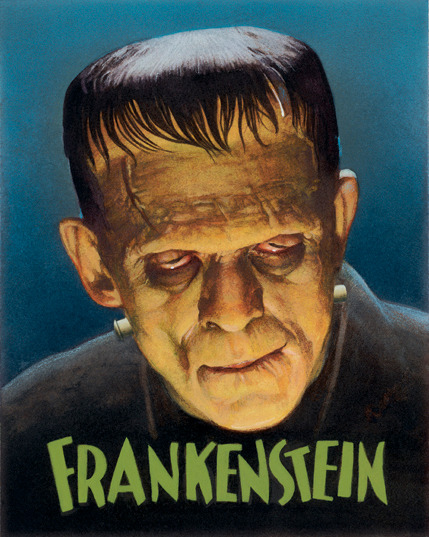
cioè il ruolo della Creatura che Boris Karloff ebbe in una serie di film prodotti dalla Universal con la regia, tra gli altri, di James Whale, negli anni ‘30. Partendo dal capolavoro di Mary Wollstonecraft Godwin Shelley, pubblicato nel 1818 e riedito dalla stessa autrice nel 1831, tantissimi hanno pensato di farne un film, per quella che è, con Dracula e i Vampiri, il soggetto più trasporto della storia del Cinema. Ho ritrovato una lista, da un’idea di Marco Giusti, che raccoglie alcune perle.
La Parodia - Frankenstein Junior, Mel Brooks, 1974
Uno dei massimi film comici di tutti i tempi. Gene Wilder è il nipote del dottore, Peter Boyle nel ruolo della vita dopo Crazy Joe (di Carlo Lizzani, sulla figura del gangster Joe Gallo) è la Creatura, Marty Feldman il più indimenticabile degli Igor, Teri Garr è Inga, Cloris Leachman è Frau Blücher. Una marea di gag, camei leggendari (Gene Hackman nel ruolo dell’eremita), Mel Brooks scopre per caso che lo sceneggiatore dei film di Whale, Gerald Hirschfeld, conservava ancora le scenografie originali, che furono usate nella stessa maniera dei film degli anni ‘30, compreso montaggio e riprese in bianco e nero. Gli Aerosmith riprendono una delle battute di Igor, Walk This Way, per farne un imperituro inno rock. Stracult!
Gli Inglesi - i Frankenstein degli Hammer Studios
La casa di produzione che diffuse i film horror negli anni ‘60 e ‘70. Peter Cushing è nei film di Terence Fischer il barone medico, che in ogni film diventa più cattivo e malefico, e le peripezie della creature fruttarono 7 film tra il 1957 e il 1974. Il più bello è Distruggete Frankenstein del 1969, con annessa scena di stupro, imposta dai produttore per rendere pruriginosa la storia (e del tutto inutile ai fini della sceneggiatura) con il mostro che è Freddy Jones, il padre di Elephant Man di David Lynch (prodotto da Mel Brooks).
Il Blaxploitaion
Nella leggendaria trilogia delle rivisitazioni black dei film, Blackenstein (1973) supera di molto per trash sia Blacula che il leggendario Abby, rivisitazione de L’Esorcista. Il mostro, il cui trucco fu curato da Ken Strickfaden, il truccatore dei Frankestein di Karloff, non fa paura per niente, ha la faccia molle e sembra un Arnold gigante. Il successo nullo della pellicola impedì la trilogia, dato che erano già pronti The Fall Of The House Of House Of Blackenstein e Blackenstein III.
Franco e Ciccio
Immancabile la rivisitazione del duo comico. Regia di Steno, titolo bizzarro, Un Mostro e Mezzo (1965), Ciccio Ingrassia è il dottore, Franco Franchi la cavia. Vuole diventare come Carlo Ponti, il famoso produttore, che è brutto, ma ha come moglie il suo idolo: Sofia Loren. Scena cult: quando dopo la creazione, Franco dice al dottore: Mi viene da ridere, mi ha fatto la faccia da fesso.
Il Trash
Non si sa ancora chi fu il regista di uno dei massimi trash movie di ogni tempo: Terror! Il Castello Delle Donne Maledette (1973). Ai più risulta Robert Oliver, regista americano dei b movie, per altri da Oscar Brazzi, che era sceneggiatore per i Bertolucci e famoso produttore, nonchè fratello del famoso attore italiano Rossano Brazzi. Che si macchia una grande carriera facendo il ruolo del Conte (non barone) Frankenstein, che produce mostri aiutato da una pattuglia di strani tipi, tra cui alcuni dei più grandi protagonisti del cinema di serie B: Gordon Mitchell come Igor, il nano vero Michael Dunn come gobbo Genz, che si mangia i pezzi degli esperimenti del Conte, Luciano Pigozzi (uno che ha recitato in 180 film!), Ciro Papa, qui battezzato Xiro Papas e anche produttore (Papa era di Torre Annunziata) ma soprattutto la creatura, che prende vita dai resti di un uomo di Neanderthal, il mitico Salvatore Baccaro, qui battezzato Boris Lugosi. Che nel film era così:

L’ultragore
Il Mostro È In Tavola... Barone Frankenstein (1973)
Uno dei film in 3D sulle vicende del famoso dottore, prodotto da Warhol, Carlo Ponti, girato da Paul Morrissey e da Antonio Margheriti per le riprese in 3D. Tonino Guerra è accreditato alla sceneggiatura, il film vede Udo Kier folle barone che crea un mostro donna, una giovane Dalila Di Lazzaro. Little Joe Dallessandro è il giovane aiutante, uno stalliere, ed era già passato alla storia per essere citato in Walk On The Wild Side di Lou Reed e, secondo la leggenda, di essere il modello del jeans nella copertina di Sticky Fingers dei Rolling Stones. Penso sia introvabile la versione originale, quelle che si trovano oggi tagliano tutte le scene “macabre” ed erotiche.
Versione Giapponese
Furakenshutain Vs Baragon - Inoshiro Honda, 1965
I giapponesi rubano ai tedeschi durante la guerra un pazzo esperimento per creare un uomo invicibile. Però durante uno studio, la creatura viene bombordata da radiazioni, che lo fanno crescere a dismisura. Sul punto di essere distrutto, un gruppi di archeologi fa rinascere un mostro, Baragon (una specie di Godzilla con il naso a lampadina) e si decide di farsi aiutare dal gigante per sconfiggere il mostro. Grandissimo!
Sono super accette altre segnalazioni!
16 notes
·
View notes
Photo

Bitter Rice (Giuseppe De Santis, 1949)
Cast: Vittorio Gassman, Doris Dowling, Silvana Mangano, Raf Vallone, Checco Rissone, Nico Pepe, Adriana Sivieri, Lia Corelli, Maria Grazia Francia. Screenplay: Giuseppe De Santis, Carlo Lizzani, Gianni Puccini, Corrado Alvaro, Carlo Musso, Ivo Perilli. Cinematography: Otello Martelli. Production design: Carlo Egidi. Film editing: Gabriele Varriale. Music: Goffredo Petrassi.
Those of us of a certain age can remember when the phrase "foreign film" meant one thing: sex. Which was something the Production Code-ridden American film had long tried to persuade us didn't exist, or at least not outside of marriage. But when European filmmakers began to recover from the war, they were under no such constraints, so a certain whiff of the forbidden tended to accompany even the most artistically conceived French or Italian releases. Even the more austere Scandinavian films were the victims (some would say beneficiaries) of prurient distributors: Ingmar Bergman's Summer With Monika (1953) was snapped up by one who cut it by a third, while carefully retaining Harriet Andersson's nude scene, and marketed it as Monika, the Story of a Bad Girl. For a long time, what Americans associated with the phrase "French film" was not Renoir or Bresson, or even Godard or Truffaut, but Brigitte Bardot. And for many Americans, their introduction to Italian neorealism was not the documentary-like work of Roberto Rossellini in Open City (1945) and Paisan (1946) or of Vittorio De Sica in Shoeshine (1946) and Bicycle Thieves (1948), but Giuseppe De Santis's Bitter Rice, with its posters and lobby cards emphasizing the voluptuous Silvana Mangano. The story has it that Bitter Rice began with a documentary inspiration: De Santis was riding on a train and noticed that it was full of working-class and peasant women. He learned that they were returning from their annual work in the rice fields of the Po Valley, where women were the primary workers because their smaller hands made them more efficient at planting and harvesting. De Santis was a member of the Italian Communist Party, and the more he investigated, the more the exploitation of the rice workers seemed to him the perfect subject for a film of social commentary. His first film, Tragic Hunt (1947), about the struggles of peasants to form a cooperative, had been well received, and he got the backing for Bitter Rice from Dino Di Laurentiis's new production company. Together with Carlo Lizzani and Gianni Puccini, he put together a story and began casting, signing up handsome newcomers Vittorio Gassman and Raf Vallone for the key male roles and the young American actress Doris Dowling, who had just made an impressive appearance as a call girl in Billy Wilder's Oscar-winning The Lost Weekend (1945), for the female lead. And then he discovered 19-year-old Silvana Mangano and the fine line between serious social-problem film and exploitation film was crossed. Mangano's innate sensuality threw the story off track, to the point that even today all anyone remembers about Bitter Rice is her vivid presence in it. Poor Doris Dowling becomes a secondary player, and the much worked-over screenplay shows the sometimes awkward efforts to integrate Mangano's character into the original plot, in which Dowling and Gassman play thieves on the run, with Dowling's Francesca hiding out among the rice-workers, while Gassman's Walter cooks up a scheme to hijack the entire rice crop. There is much ado about a stolen necklace that turns out to be fake, and a little bit of social commentary about the conflict between the unionized workers and the freelance "illegals." Traces of the original documentary inspiration remain in the movie, in between scenes of Mangano dancing and seducing Gassman and Vallone, and De Santis is a keenly observant director with a gift for staging impressive shots, deftly aided by cinematographer Otello Martelli. But the failure to assemble a coherent story undermines the whole project, so, naturally, De Santis and Lizzani were nominated for the best motion picture story Oscar.
6 notes
·
View notes
Video
youtube
Секретная война - шпионский триллер Франция, Италия, ФРГ, США 1965 Генри Фонда, Анни Жирардо, Бурвиль
Фильм, название которого переводится и как «С��кретная война», представляет собой несколько новелл о противостоянии Востока и Запада. Единственный персонаж, который объединяет истории, американский генерал Брюс (Роберт Райан). Всё начинается в Германии: из столицы ГДР в Западный Берлин прорывается перебежчик (Генри Фонда). Он представляется советским офицером и требует немедленной встречи с генералом Брюсом. Но натыкается на непробиваемость вояк сначала в лице сержанта, а затем – капитана. За этим следует отличный нуар о человеке, запертом в комнате, которая простреливается снайперами...
#триллер #шпионы #киноклассика
Режиссер: Кристиан-Жак / Christian-Jaque, Вернер Клинглер / Werner Klingler, Карло Лиззани / Carlo Lizzani, Теренс Янг / Terence Young В ролях: Генри Фонда, Роберт Райан, Анни Жирардо, Бурвиль, Робер Оссейн, Витторио Гассман, Марио Адорф, Клаус Кински, Питер ван Эйк, Мариа Грация Бучелла, Жорж Маршаль
Перевод: Авторский (одноголосый закадровый) Роман Янкелевич
0 notes
Text
Il 23 luglio ad Animaphix sarà la Giornata del Cunto, con Mimmo Cuticchio e Simone Massi
Dopo la presentazione in anteprima mondiale alla scorsa Mostra del Cinema di Venezia nella sezione Orizzonti, dove ha ricevuto il Premio Carlo Lizzani, la partecipazione ad Alice nella Città e un intenso percorso festivaliero, arriva – martedì 23 luglio, ore 22 – in anteprima siciliana, alla 10a edizione di Animaphix Film Festival, l’atteso lungometraggio del pluripremiato regista di animazione…
0 notes
Text
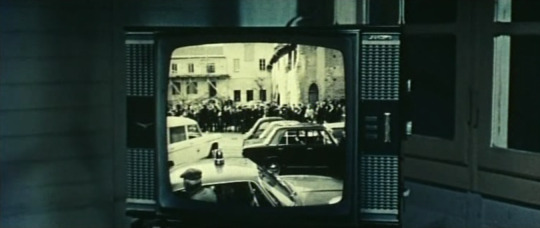
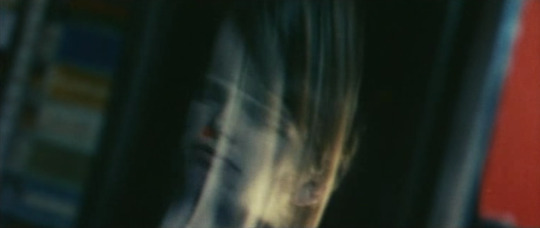
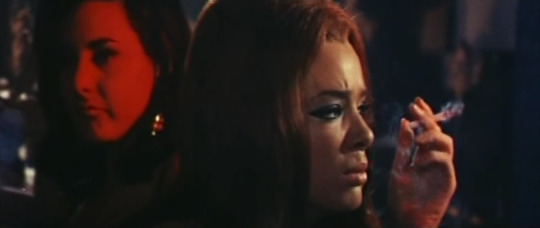

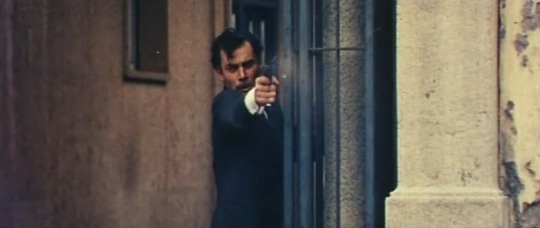
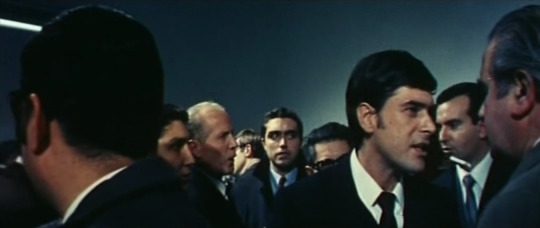
Bandits in Milan (1968)
#goodfellas who#banditi a milano#bandits in milan#carlo lizzani#gian maria volonté#tomas milian#mine
10 notes
·
View notes
Text

620. Retalhos da Vida (L'amore in città, 1953), dir. Michelangelo Antonioni, Federico Fellini, Alberto Lattuada, Carlo Lizzani, Francesco Maselli, Dino Risi & Cesare Zavattini
0 notes
Text
Storie di vita e malavita
Di Carlo Lizzani
0 notes
